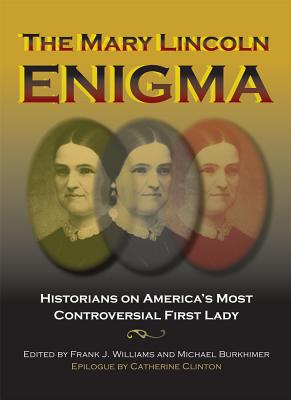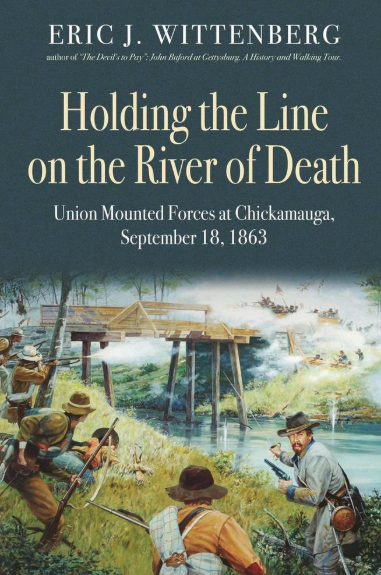The Mary Lincoln Enigma: Historians on America’s Most Controversial First Lady edited by Frank J. Williams and Michael Burkhimer. Southern Illinois University Press, 2012. Cloth, ISBN: 0809331241. $32.95.
 On September 24, 2012, in Chicago, and on October 1 in Springfield, Mary Todd Lincoln will be retried on the charge of insanity. Perhaps she will fare better than at the first hearing, held in Chicago on May 19, 1875. Declared insane by a civil court jury after three hours of testimony, Mary was committed to Bellevue Place, a private sanitarium in Batavia, Illinois, and her son, Robert, was soon made conservator of her estate.
On September 24, 2012, in Chicago, and on October 1 in Springfield, Mary Todd Lincoln will be retried on the charge of insanity. Perhaps she will fare better than at the first hearing, held in Chicago on May 19, 1875. Declared insane by a civil court jury after three hours of testimony, Mary was committed to Bellevue Place, a private sanitarium in Batavia, Illinois, and her son, Robert, was soon made conservator of her estate.
From that moment since, the trial of Mary Todd Lincoln has generated controversy. For some, it was little more than a sham proceeding convened by elite men intent on silencing the boisterous former First Lady and helping her son take control of her assets. For others it was a necessary proceeding intended to protect Mrs. Lincoln’s well-being as well as her estate.
Over time, new sources have emerged. In 1986, Mark E. Neely Jr. and Gerald McMurtry published The Insanity File and included letters that illuminated Mary’s relationship with her daughter-in-law and spoke to her emotional state between 1869 and 1875. More recently, Jason Emerson’s The Madness of Mary Lincoln (2007) offered a strenuous defense of Robert Todd Lincoln’s actions. The volume included previously unknown letters written by Mary immediately before and, most significantly, in the three years after her institutionalization that lasted several months.
In the forthcoming Mary Lincoln’s Insanity Case: A Documentary History, Jason Emerson brings together the evidence: correspondence, newspaper accounts and editorials, even the daily patient progress reports from Bellevue Place. Along with Justin and Linda Turner’s Mary Todd Lincoln: Her Life and Letters, readers can immerse themselves in the documentary record and reach their own conclusions about Mrs. Lincoln.
Whatever one decides about the insanity trial, Mary’s ordeal in the years following her husband’s assassination is heartrending. “Grief,” “sorrow,” “misery,” “anguish”—this is the vocabulary of her life. She felt alone, adrift, homeless. She experienced blinding headaches, and suffered chills as well as other bodily woes. She endured public humiliations and obsessed over financial concerns. “I wonder that I retain my reason & live,” she wrote in November 1865. She prayed for death and confessed “only my darling Taddie prevents my taking my life.”
To be sure, she displayed erratic behavior (trying to sell her clothes; imagining fires; carrying thousands of dollars in bonds sewn into her skirt). She read the newspaper editorials that called her “deranged.” Still, even in Victorian culture, it was a leap from bizarre actions to insanity, but Robert pressed the issue. As is made clear in his contribution to the The Mary Lincoln Enigma, Jason Emerson remains Robert Todd Lincoln’s most steadfast defender. His essay probes the relationship between mother and eldest son and concludes that Robert “honestly believed his mother was insane, and he took this legal action in order to protect her from herself and from other people” (270). In “A Psychiatrist Looks at Mary Lincoln,” James S. Brust suggests that Mary suffered a “major depressive disorder with psychotic features” (247). Fair enough, but today’s DSM III parlance does little to illuminate the issue of nineteenth-century insanity.
Not everyone agrees with Emerson, including Frank J. Williams, the distinguished co-editor of the volume. Williams sees Mary as a tragic figure left vulnerable “to the maneuverings of her eldest son” (2) who “decided that his mother’s irritating behavior must have been caused by insanity” (10). Harold Holzer, who contributes a superb essay to this volume, “’I Look too Stern’: Mary Lincoln and Her Image in the Graphic Arts,” has written elsewhere “I am still not convinced that Robert acted properly in later subjecting his mother to the humiliation of a public insanity trial—much less without time for her to prepare a legal defense.” In her epilogue, Catherine Clinton reads Mrs. Lincoln’s letters from 1875 differently than Emerson and asserts that “the humiliation of a public hearing and the sham of her legal representation were devastating” (360).
One of the virtues of The Mary Lincoln Enigma is that it does not dwell upon the insanity trial. Readers see Mary as a young woman, a loving wife and mother, and a person with strong passions and interests. Stephen Berry situates her among her siblings, five full brothers and sisters and eight half-brothers and sisters who survived infancy. Her father had started a second family very quickly after Mary’s mother died, and the children were raised primarily by a slave nurse. Mary escaped Lexington for Springfield in 1839, when she was 21, but Berry’s cogent analysis reveals how the needs of the child to be valued and desired were planted in the adult.
In “Life at Eighth and Jackson,” Richard Lawrence Miller revisits Mary and Abe’s marriage and argues that their life in Springfield was far more harmonious than most prior scholarship has led us to believe. To be sure, there were quarrels and disagreements, but also warmth and joy. Lincoln was away from home at least 120 days a year (he once said “perhaps more than half my time”), and Mary no doubt felt lonely. But many of the most negative stories emerged only after Mary was widowed, and Miller wisely warns us against accepting uncritically the commonplace portrayal of Lincoln as a saint “vexed by a demon” (77).
At the same time, as Douglas Wilson made clear in his important revisionist view of William H. Herndon’s relationship to Mary (first published in 2001 and reprinted here), some of the information gathered in 1865-66 by Lincoln’s former law partner, who labeled Mary a “she-wolf” (she in turn called Herndon “a dirty dog”), cannot be dismissed merely as a byproduct of Herndon’s animus. Many correspondents recounted marital difficulties, though it was Herndon’s public assertion that Lincoln did not love Mary and instead “did love another” (Ann Rutledge) that intensified Mary’s anger and despair.
Acknowledging that there are plenty of anecdotes and reminiscences on all sides, Kenneth J. Winkle, in “’An Unladylike Profession’: Mary Lincoln’s Preparation for Greatness,” invites readers to take a fresh look at Mary’s interest in politics. When Lincoln was elected to Congress, Mrs. Lincoln took the unusual step of accompanying him to Washington, with two children in tow. Winkle argues that “she devoted herself to helping her husband attain a national office” (104). Lincoln, it is well known, was highly ambitious (Herndon called his ambition “a little engine that knew no rest.”); so too was Mary. After Lincoln’s nomination for president, her cousin wrote “you are an ambitious little woman” (107). At the same time, co-editor Michael Burkhimer, in “The Reports of the Lincoln’s Political Partnership Have Been Greatly Exaggerated” (an earlier version appeared in 2003), cautions us against overstating her influence on her husband’s political career.
Once in the White House, the First Lady found ways to express her evolving beliefs. In “Mary Lincoln, Race, and Slavery,” Brian Dirck argues that “whereas before the war she carried a mixture of contradictory sentiments and ideas about slavery, the war served to quietly harden her into a staunch advocate of emancipation” (49). Mary faced accusations of being a southern sympathizer, and she never fully escaped her racial prejudice. For example, she called her seamstress Elizabeth Keckley a good worker “although colored,” but she also contributed $200 to the Contraband Relief Association, organized by Keckley, and told her husband in November 1862, “I am sure, you will not object to [the money] being used in this way—the cause of humanity requires it” (54).
Of course, Mrs. Lincoln needed little incentive to spend money. As discussed by Donna McCreary in “Fashion Plate or Fashion Trendsetter,” her obsession with clothing became scandalous during the war. She also loved to travel. In “’I am so fond of sightseeing’: Mary Lincoln’s Travels Up to 1865,” Wayne C. Temple observes that, at one juncture during the war, Mary was absent from Washington for 71 days.
If before 1865 she journeyed for education and amusement, to sightsee and shop, afterward she traveled to escape. She lived in Europe with Tad from 1868-1871. She described herself as “a desolate wanderer.” And then Tad died and she became completely unhinged. So much grief, so much loss. Edward in 1850; Willie in 1862; her husband in 1865; now Tad in 1871. “My heart is entirely broken, for without his presence, the world is complete darkness,” she scrawled.
A few years later, her only surviving child had her committed. Twelve months after her release (and following a second sanity hearing in which she was adjudged “returned to reason”), she sailed for Europe and remained there four years. She continued to suffer from anxiety and illness, real and imagined, but the sight of the Pyrenees provided occasional comfort. Before departing for France in 1876, she reproached Robert for his actions: “you have injured yourself, not me, by your wicked conduct.”
Whatever verdict those juries reach this fall, they will fail to define Mary Todd Lincoln, a troubled woman who was the subject of intense controversy in her own time and remains so today.
Louis P. Masur, Professor of American Studies and History at Rutgers University, is the author of Lincoln’s Hundred Days: The Emancipation Proclamation and the War for the Union (2012) and The Civil War: A Concise History (2011).
